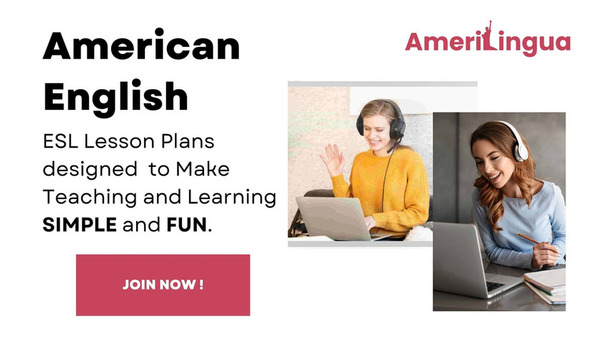As any ESL teacher knows, planning engaging, effective lessons takes time, energy, and creativity. Between grading, meetings, and classroom management, finding the hours to build a well-structured plan from scratch can feel overwhelming. Fortunately, with the right strategies and resources, lesson planning doesn’t have to be a struggle. In this guide, we’ll explore how to streamline your approach to ESL instruction, save time, and still deliver high-quality classes your students will love.
Whether you’re new to teaching English or a seasoned educator looking to refresh your routine, this article will walk you through practical methods, tools, and real-world tips that will make lesson planning simpler—and more effective.
Why Lesson Planning Matters in ESL Education
Lesson planning is more than just a checklist of activities. It’s a roadmap for learning that helps students meet their language goals while giving you, the teacher, the clarity to stay organized and confident in the classroom.
For ESL (English as a Second Language) learners, who may struggle with cultural references, grammar structures, or vocabulary, a thoughtfully prepared lesson can make the difference between confusion and connection. When lessons are tailored to your students’ proficiency levels and interests, you build a bridge to real comprehension—and engagement.
1. Start with Clear Learning Objectives
Before you even open a textbook or search for a fun grammar game, ask yourself: what do I want my students to achieve by the end of this lesson?
A solid ESL lesson begins with specific, measurable objectives. Think in terms of language skills—such as speaking fluently about past experiences, reading short articles for key ideas, or using modal verbs in everyday conversations. Clear goals help shape every element of your plan, from warm-ups to wrap-ups.
Some examples:
- Students will be able to introduce themselves using correct subject-verb agreement.
- Students will practice listening for main ideas and supporting details.
- Students will use the present perfect tense in context to talk about experiences.
2. Use Ready-Made Resources (Without Compromising Quality)
Creating lesson plans from scratch every day is simply not sustainable—especially if you're juggling multiple classes or teaching across different levels.
That’s where ESL lesson plans come in. High-quality, ready-to-use plans can save hours of preparation time and ensure that your classes stay structured and student-focused. Look for resources that:
- Align with international English standards (CEFR, TOEFL, IELTS, etc.)
- Include a mix of activities (reading, listening, speaking, writing)
- Offer digital and printable formats
- Are level-specific and culturally sensitive
The best sites also include teacher guides, answer keys, and extension activities, giving you full flexibility to adapt materials to your unique teaching style.
3. Build Lessons Around Real-Life Contexts
Language doesn’t exist in a vacuum, and neither should your ESL classes. One of the most effective ways to help students retain vocabulary and grammar is by embedding lessons in real-world situations.
For example, instead of teaching conditionals in isolation, frame the lesson around a context like travel plans or job interviews:
- “If I get the job, I’ll move to another city.”
- “If it rains tomorrow, we’ll cancel the picnic.”
This not only improves understanding but also makes learning relevant. Students are more likely to remember vocabulary and expressions when they see how they apply outside the classroom.
Some practical themes to consider:
- Grocery shopping and budgeting
- Attending a doctor's appointment
- Ordering food at a restaurant
- Making polite requests or complaints
4. Incorporate Student-Centered Activities
Traditional, lecture-style ESL classes often leave students disengaged—especially when they’re eager to practice speaking and listening. The best lesson plans include interactive, student-centered activities that encourage communication, collaboration, and creativity.
Ideas to boost interaction:
- Pair or group role plays (e.g., waiter/customer, doctor/patient)
- Debates or discussions on current topics
- Games like “Two Truths and a Lie” or “Find Someone Who...”
- Listening to songs or podcasts followed by comprehension questions
When students take an active role in the learning process, they gain confidence and develop language skills more naturally. Use your lesson plan as a framework, but let the energy in the room shape how you execute it.
5. Differentiate for Mixed-Level Classes
Anyone who’s taught ESL knows that even students within the same level can vary widely in their abilities. Differentiating your lessons ensures that everyone is challenged and supported.
Some tips for handling mixed-ability groups:
- Provide tiered worksheets with varying levels of difficulty
- Pair stronger students with those who need more help (peer support)
- Offer optional extension activities for early finishers
- Adjust questioning techniques (e.g., open vs. closed questions)
Again, using adaptable esl lesson plans as a foundation allows you to scale activities up or down depending on your class’s needs.
6. Embrace Technology (Smartly)
Incorporating tech into your lesson plans doesn’t mean throwing a YouTube video at students and calling it a day. Done right, digital tools can make lessons more dynamic and personalized.
Some smart tech integrations:
- Google Slides for interactive presentations
- Padlet for collaborative writing or brainstorming
- Kahoot or Quizlet for vocabulary games
- Zoom breakout rooms for online speaking practice
Balance is key—technology should support your goals, not replace your presence as a teacher.
7. Reflect and Improve
No lesson is perfect. After each class, take five minutes to jot down what worked and what didn’t. Maybe your warm-up was too long, or a grammar explanation was confusing. These reflections will sharpen your instincts over time and help you refine future plans.
Ask yourself:
- Did students meet the lesson objectives?
- Were instructions clear?
- Was there enough speaking/listening practice?
- What can I improve next time?
You’ll be amazed at how much your teaching improves just by staying aware and flexible.
Final Thoughts
ESL teaching is as rewarding as it is challenging. But you don’t have to reinvent the wheel with every lesson. By using well-designed esl lesson plans, focusing on clear goals, real-life relevance, and student interaction, you can create engaging, impactful classes without burning out.
Teaching English is about connection—between you and your students, and between your students and the wider world. With the right tools and mindset, lesson planning becomes not just manageable, but meaningful.


